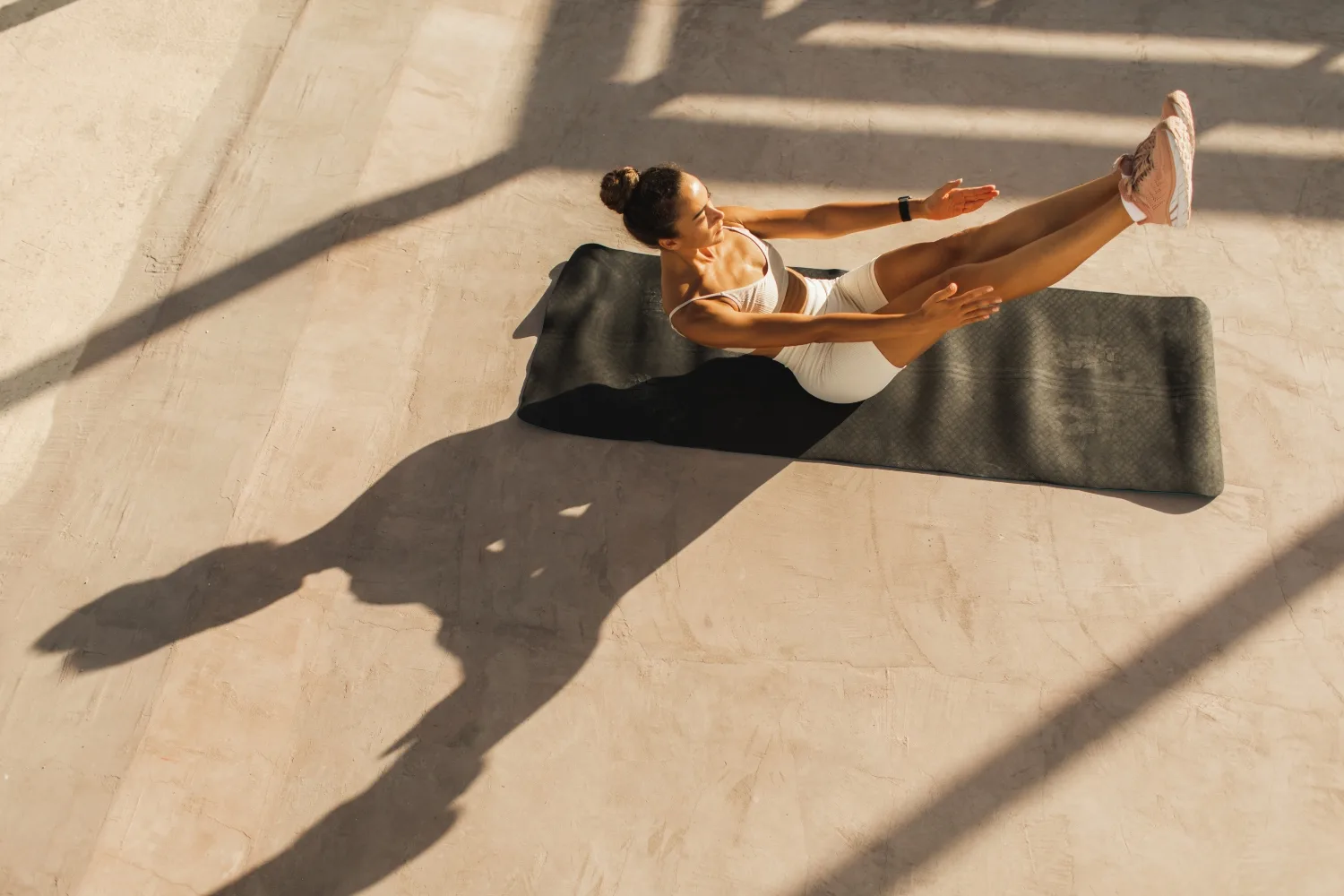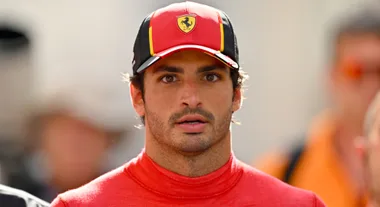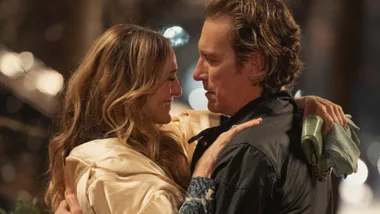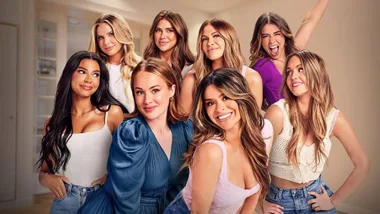Have you exercised today, eaten a protein-rich breakfast (while writing in your gratitude diary) and meditated for 20 minutes in your dedicated wellness space? Have you switched to crystal-infused water bottles, organic shampoo, silk sheets, menstrual cups, and alcohol- free perfume?
If you’re feeling a tad overwhelmed reading that, you should. The pressure we face, especially as women, to live up to the goop-level of wellness is growing daily. What started as a left-of-centre hippie health movement in the 1970s is now a $US4.4 trillion ($6.6 trillion) global wellness industry, and it is predicted to reach $US7 trillion by 2025. Wellness is big business.
On the face of it, that’s a good thing, right? The idea of wellness should be an ostensibly positive topic. After all, the Oxford Dictionary describes it as achieving “a level of health that minimises the chances of becoming ill”. Who doesn’t want that?
However, in the past few decades, the wellness ideation has pervaded every aspect of life. From the hypoallergenic mattresses we sleep on to the collagen-boosted creams we cover our skin in, it has infiltrated not only our physical state but also how we think and make decisions.
When does an obsession with being healthy become unhealthy?
Traditionally, health has been the realm of doctors and nurses, a trust in higher education and scientific research.
Without the ease of a Google search and a TikTok deep dive, our grandparents followed doctors’ orders both when they were ill and when they weren’t. Self-diagnosis and self-determinism were virtually unheard of.

Now, the rise in digital resources, along with the amplification of individual voices via social media, mean it’s easier to obtain wellness information than ever before. Not only is this a great way to learn about our bodies but it also allows us to feel the weight of responsibility for our health. As individuals, we can now feel empowered to care for our own mind and body.
And on the whole that’s a good thing, says nutritionist and exercise scientist Brooke Turner, depending on how your internal thoughts are programmed and the mindset you’re operating from.
“When people are sitting there scrolling on their phones and they’re seeing all these wonderful things that people are doing [for their health],” explains Turner, “there’s a small percentage that might go, ‘That’s so motivating,’ and then there’s the others who think, ‘I’m never going to look like that. I’m just going to have another chocolate bar and start tomorrow!’”
Yet, when you consider that there are more than 60.8 million hashtags for “wellness” on Instagram, and more than eight billion views of #wellness content on TikTok, the question of credibility becomes pretty important.
A 2019 study stated that the wellness industry as a whole is a “highly unregulated space that relies heavily on personal testimonials, anecdotal evidence, intuition and positive thinking”. Another study suggested that social media influencers have been a damaging force online, as they imply that “only those who create a body shaped through control and discipline are healthy and beautiful – and can be happy”.

Why is wellness becoming so toxic?
It certainly helps that the topic of wellness is highly visual – easily promotable on social media, billboards, magazine ads and product packaging with overfilled acai bowls, yoga poses on clifftops and overwhelmingly young, attractive Caucasian protagonists. (In Australia, as in the US and UK, white influencers systematically get paid more than influencers from other ethnic backgrounds.)
“In my opinion, I think the wellness industry is getting out of control,” says Dr Andrea Szász, a psychotherapist and program director at South Pacific Private. “It can be dangerous to follow people, let’s say, on social media who are not actually educated or registered with a peak body or qualified to give professional advice.”
And the research backs her up, with a recent survey finding that a whopping 90 per cent of social media influencers are sharing inaccurate health information. Of course, this isn’t just contained to social media.
Gwyneth Paltrow’s goop (which is valued at $US250 million) has repeatedly been called out for misinformation and false labelling of wellness products – even being described as “exploiting the placebo effect” – and celebs such as Kourtney Kardashian have been called out for pushing unqualified wellness advice.
Who is tackling the wealth of misinformation online?
Luckily there’s a band of fearless health professionals who are trying to curb the trend of misinformation, including Dr Rose Marie Leslie (@drleslie, 903k TikTok followers), a doctor who shares advice on common symptoms, and Dr Mike Varshavski (@doctormike, 1.9m followers), who fact-checks wellness memes and medical TV shows. One of the most controversial, however, is Dr Idrees Mughal (@dr_idz, 1.6m followers), who tackles wellness influencers head on by naming and shaming their health advice and backing it up with meta studies and health lessons. (His sign-off phrase is “class dismissed.”)
“This [misinformation] is only applicable to the wellness industry, and that is because you won’t find it in any other subject matter,” he has said. “You’re not going to see someone who isn’t an engineer make a video about [how] ‘this is the best way to build a skyscraper.’”
Mughal also takes aim at the number of unregulated qualifications in the wellness space by pointing out: “You won’t find a two-week online engineering course to build your own house, but you will find that for nutrition, wellness and gut health.”
This kind of misinformation was highly prevalent during the pandemic years, when the rise in usage of social media platforms (especially TikTok) enabled anti-vaccine influencers to gain traction. The US-based Center for Countering Digital Hate even found that 65 per cent of the anti-vaccine content on Facebook and Twitter was shared by just 12 influencers. Twelve!

What is the impact of toxic wellness?
While the effect of misinformation and unqualified health advice is hard to measure (especially for anti-vaccine content), it’s impossible to ignore the repercussions of an industry that promotes the themes of clean eating, diet culture and wellness faddism.
Studies have shown that Instagram is contributing to people’s struggles with body image and self-esteem, as well as depression and anxiety. TikTok-fuelled “health” challenges have also resulted in the deaths of several young women in the US.
One of the more enduring effects of the wellness industry’s constant barrage of “clean eating” images and advice is the rise in disordered eating.
According to Szász, eating cleanly and “being healthy” (a lifestyle touted by numerous influencers) carries a range of side effects. “When it comes to what we eat, how we eat and what supplements we take, if we don’t find a moderate way to use information and implement it in our lives, it can tip us into dangerous territory,” she explains.
And by that she means an unhealthy relationship with food and exercise, which is known as orthorexia – a proposed mental-health condition characterised by an obsession with “clean eating” coupled with cutting out whole food groups. It’s estimated that about 6.5 per cent of the Australian population could be suffering from it.
Sophie Smith, now 24, used to be one of those statistics. She has battled orthorexia since she was 15 and it’s only now, though recovered, she can see the true extent of her obsession with healthy eating. “I guess my eating evolved into orthorexia where I was focusing on maintaining a thin body, but it wasn’t really for aesthetic reasons,” she says. “It was more for health reasons because I thought I would be ‘unhealthy’ if I wasn’t doing what I was doing.”
Smith says that although her family wasn’t particularly health-oriented, she grew up with the typical messages of “obesity is bad and you’ve gotta burn off calories”. What she did have, however, were some underlying personality traits common in people vulnerable to eating disorders. “I am very driven and achievement orientated, hardworking and I want to do everything right. I like to follow the rules,” she explains. “And perfectionism was definitely there. These personality traits put me at risk.”

So she began exercising … a lot. As well as doing dance three times a week, Smith took up running and added YouTube workouts in her room at night. “Then I did a pretty strenuous HIIT-style workout sometimes that I didn’t really want to do,” she says. “But I remember I would make sure I had a target for how many calories my workouts were meant to burn.”
Alongside this, Smith began restricting her diet, removing food groups and saying no to anything sweet, even her own birthday cake. She obsessively followed “guidelines” for how to be healthy. Along with her eating disorder, Smith developed a chronic bowel condition, which she puts down to her orthorexia. To avoid questions from concerned family and friends she also started lying.
“I had it [orthorexia] for about four-and-a-half years until I was 19, and during that time I didn’t actually know or think I had an eating disorder because ‘being healthy’ is so socially acceptable in our society,” Smith explains. “But sometimes people are doing something healthy because they feel compelled to do it, or [because} they just can’t not do it.”
Smith really thought she was just doing what everyone else was doing to stay well. And what was wrong with that? “I assumed what I was doing was normal,” she says. “I didn’t see any issue in my behaviours or my lifestyle or my eating habits. I thought everyone had to do this to be healthy.”
Has ‘wellness’ gone too far?
And that is often where the wellness industry fails us, says Szász, by promoting the idea that everything labelled “wellness”, “healthy”, “non-toxic” is a good choice for everybody – a blanket solution. “Instead,” she says, “it’s actually more important to learn what feels right for you and to learn to actually connect with your body. Understanding your health…starts with self-acceptance and knowing that you are valuable.”
If you give in to the external pressures of the wellness industry, she adds, you are never going to “tick all the boxes”.
“We all need to realise that we come in different sizes and shapes,” she says, “and there isn’t a one-size- fits-all approach to our health.”
As the wellness industry continues to grow, there are calls for more regulation. Instagram has committed to blocking harmful hashtags, and TikTok recently expanded on its evolving mental-health support tools. In Australia, influencers are no longer permitted to share their experiences of therapeutic-listed products and need to label branded content.
But is that enough? Should there be more regulation on what products are marketed under the wellness banner?
Brooke Turner says maybe, but more importantly we need to change our own mindsets. “It comes down to how we react to these external inputs,” she says. “If something is triggering you, or it’s not promoting or getting you closer to achieving your goals, or you find yourself feeling inadequate or comparing yourself to others, you need to start limiting those sources [of information] to stop draining your energy. It’s simply not worth it.”
This article originally appeared in the February issue of marie claire Australia.










